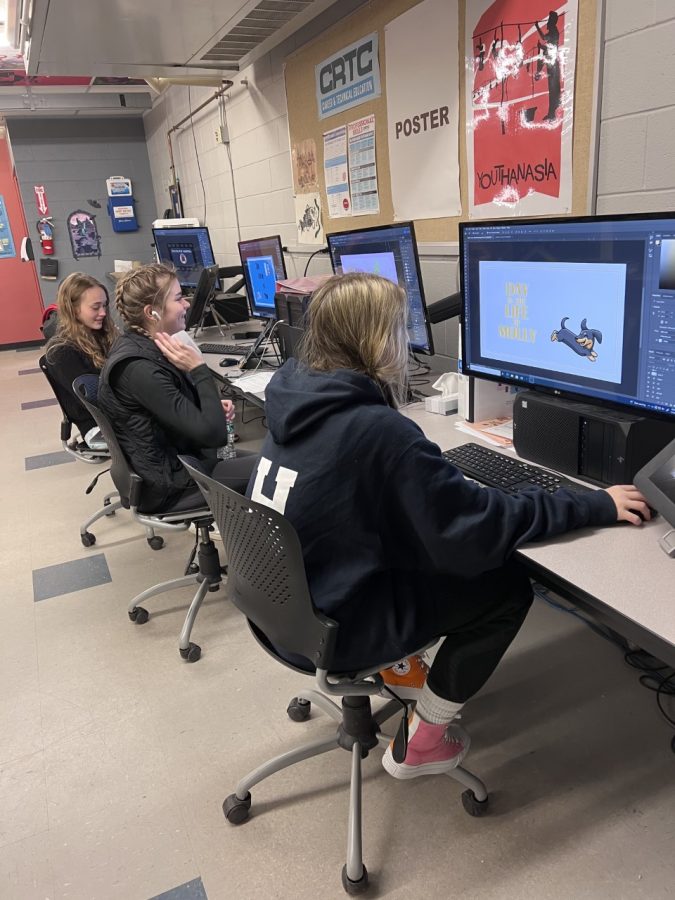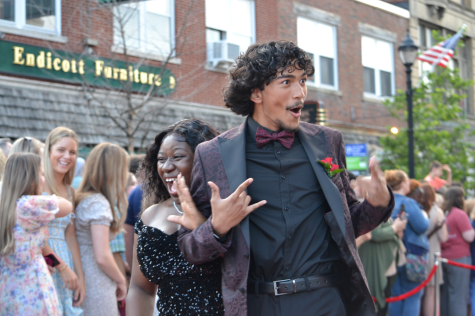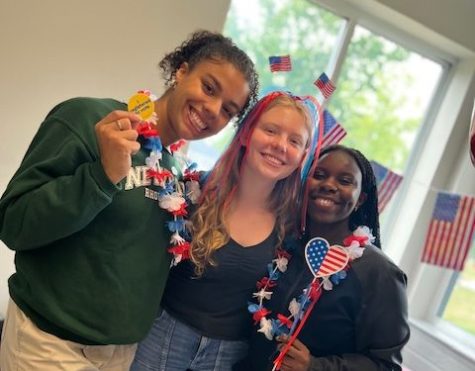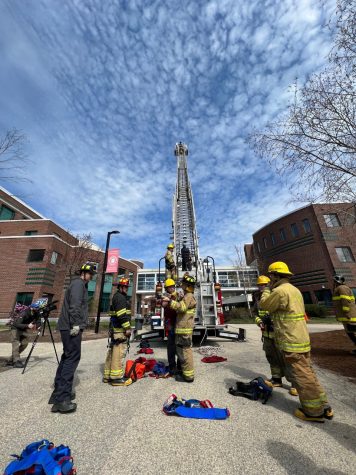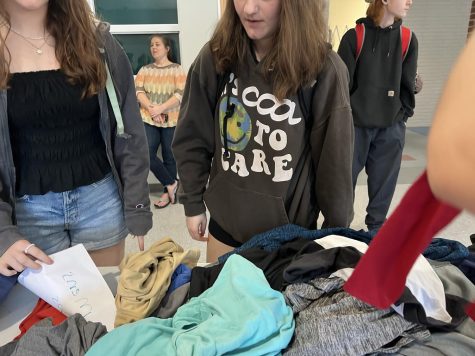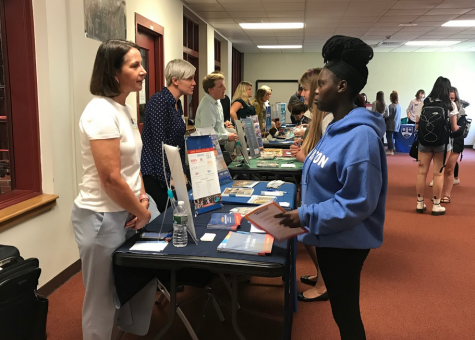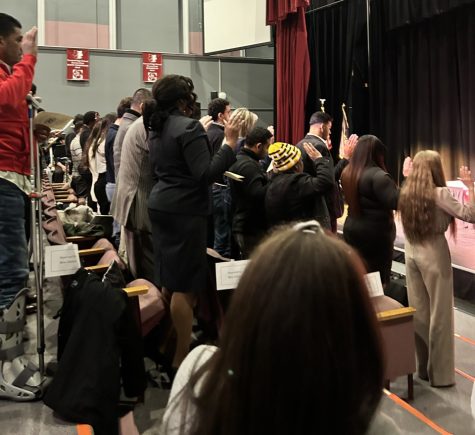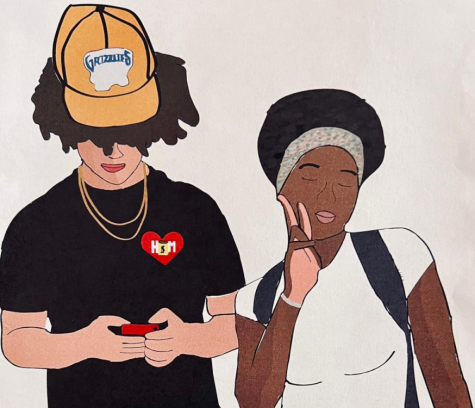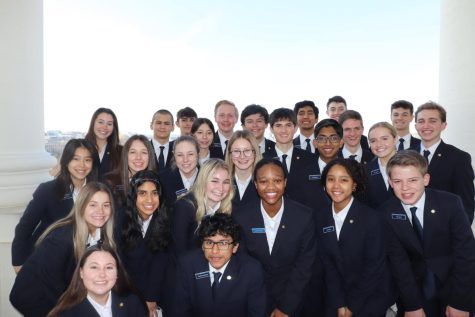Consider CRTC Graphic Design & Creative Media
Jenna Ross, Charlotte Summerlin and Willa Marino enjoy a laugh during a recent Graphic Design & Creative Media class at the CRTC.
Not all Concord High School students know about the many incredibly valuable opportunities that can come from enrolling in Concord Regional Technical Center’s Graphic Design & Creative Media program.
Artistic students can earn college credit (up to 12 credits!) by taking a two-year course that is enjoyable as well as informative.
And, the skills students learn can help farther down the road. A large asset is a portfolio of work that can be an incredible resource to anyone planning on going into any field of art.
Though mostly advertised to juniors, sophomores and seniors are able to apply to enroll in the course. In addition to filling out an application form, a student must submit a small application essay explaining reasons for wanting to take the class.
There is often a waiting list for this popular course.
Those who can apply include CHS students and students from other CRTC sending schools, which include Bow High School, Hillsboro-Deering High School, Hopkinton Middle High School, John Stark Regional High School, Kearsarge Regional High School, Merrimack Valley High School, Pembroke Academy and Pittsfield High School.

Graphic Design & Creative Media is a college level program whose teacher, Tom Mungovan, understands the graphic design industry and strives to help each student improve.
Mungovan’s background is described on the Graphic Design & Creative Media CRTC page: “Teaching is a true love of mine. I have taught over 30 different graphic design, illustration, software, color theories and art history classes at the college and high school levels for 20 years now.”
The equipment is high level, professional technology that is actually used in the workplace. Students learn to utilize Adobe Photoshop, Illustrator, InDesign, PremierPro, After Effects, and more.
A major bonus becomes apparent if you are offered a spot to come back a second year. These students are able to begin apprenticeships and gain experience in the workplace.
Even before apprenticeship, competitions are often held with a cash reward. Students will each create a design for a real local company or business, and whoever’s design is chosen will receive money in response.
Scarlett Loukedes, a senior, said she enjoys Graphic Design & Creative Media “because Mr. Mungovan provides great support and opportunities for me to design for companies.”
Another incredible resource that you receive from the class is the exposure to colleges relating to art. Even if you don’t necessarily intend to pursue graphic design as a college major, it’s interesting to learn about. And who knows? You might find a major worth considering.
College representatives that visit Graphic Design & Creative Media students range from SCAD in Savannah, Georgia, to Ringling in Sarasota, Florida. They come with helpful knowledge and flyers which could be a great benefit to those looking into the art field and even to those who aren’t.
Important to know and remember, however, is the discipline needed for the class. Mungovan teaches everything students need to know, and helps them through various projects, but large portions of classes require independent work.
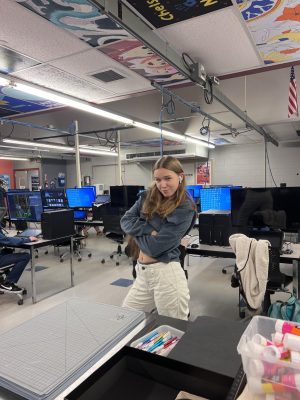
“I like that everybody gets the same job sheet, and that everyone’s final product is totally different. It just shows how there are different ways to go about problems creatively,” said Maria Ruelas, a senior second-year student in the program.
There also will be critiques after many assignments, allowing for positive and negative feedback and constructive criticism towards your and others work. This may seem intimidating at first, but the benefits of it outweigh the discomfort.
If you’re interested in applying, you can visit the CRTC Graphic Design & Creative Media program online. The application process begins online in January, and the majority of submissions are completed by late February, though there are occasional exceptions.
There are a few ways you could prepare and find out more about the program. It would be wise to talk to your school counselor beforehand, as well as look into CRTC opportunities.
There are chances for informal assemblies, CRTC Preview Days, lunch informal tables, classroom visits, and meetings with teachers.
There is also a short video online.


